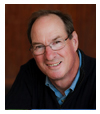The Napoleonic era of the Ethan Gage novels was colorful. The Cold War was grim.
But I’m intrigued by the idea of including part of the notoriously polluted Hanford nuclear reservation in Washington State in a new “Manhattan Project National Historic Park.” I spoke on the possibility in Seattle recently.
I was invited by the National Parks Conservation Association because I covered Hanford as a reporter for the Seattle Times and wrote about it in my nonfiction book, “Northwest Passage: The Great Columbia River.”
Hanford is in the midst of an 80-year, $130 billion cleanup of radioactive waste. At first glance the idea of making desert desolation a part of the national park system might seem nuts.
But the national parks are about more than pretty places. The agency does a superb job of interpreting the best and worst of American history, including slave cabins, Japanese internment camps, and the Andersonville Civil War prison.
Hanford was where the plutonium was made for the world’s first atomic bomb test in New Mexico. It also fueled the Nagasaki bomb. The Hiroshima bomb was fueled by U-235 from Oak Ridge, Tennessee.
Both these communities would be included in the new park, as well as Los Alamos, New Mexico, where physicists worked on the design of the bomb.
Hanford includes the world’s first large-scale nuclear reactor, the B Reactor next to the Columbia River. It’s a fascinating artifact. Visitors can see the old control room and the stack of graphite rods that controlled the reaction.
Legislation to create the park is expected soon. Just what form it would take is far from decided.
The title of my talk was “Tool of Victory or Pandora’s Box?” illustrating the ways the arms race can be interpreted.
So how do we commemorate Hanford? Did it win World War II, prevent a disastrous invasion of Japan, and deter World War III between the United States and the Soviet Union? Or start a ruinous arms race that still threatens the end of the world?
The easy and most likely solution will be to put a simple sign up, let visitors draw their own conclusions, and call it a day.
But our government is capable of being ingenious in not just preserving historic places, but providing lively and thought-provoking historical interpretation. A museum at Los Alamos already does a good job of looking at The Bomb with a nuanced and balanced display.
We could enshrine Hanford, or condemn it. The park could be an occasion for a moving monument, like the Vietnam memorial in Washington, D.C., or the World Trade Center plaza in New York. It could provoke and invite comment, and become a site for discussion of arms control and international politics. It could lead visitors to the Arid Lands Ecology Reserve and the Hanford Reach of the Columbia River, two ecosystems ironically protected by bomb production.
How should we remember Hanford, Oak Ridge, and Los Alamos? I quoted Chinese Premier Chou en Lai when he was asked, two hundred years after the fact, whether the French Revolution had been a good thing or a bad thing.
His answer: “It’s too early to tell.”

